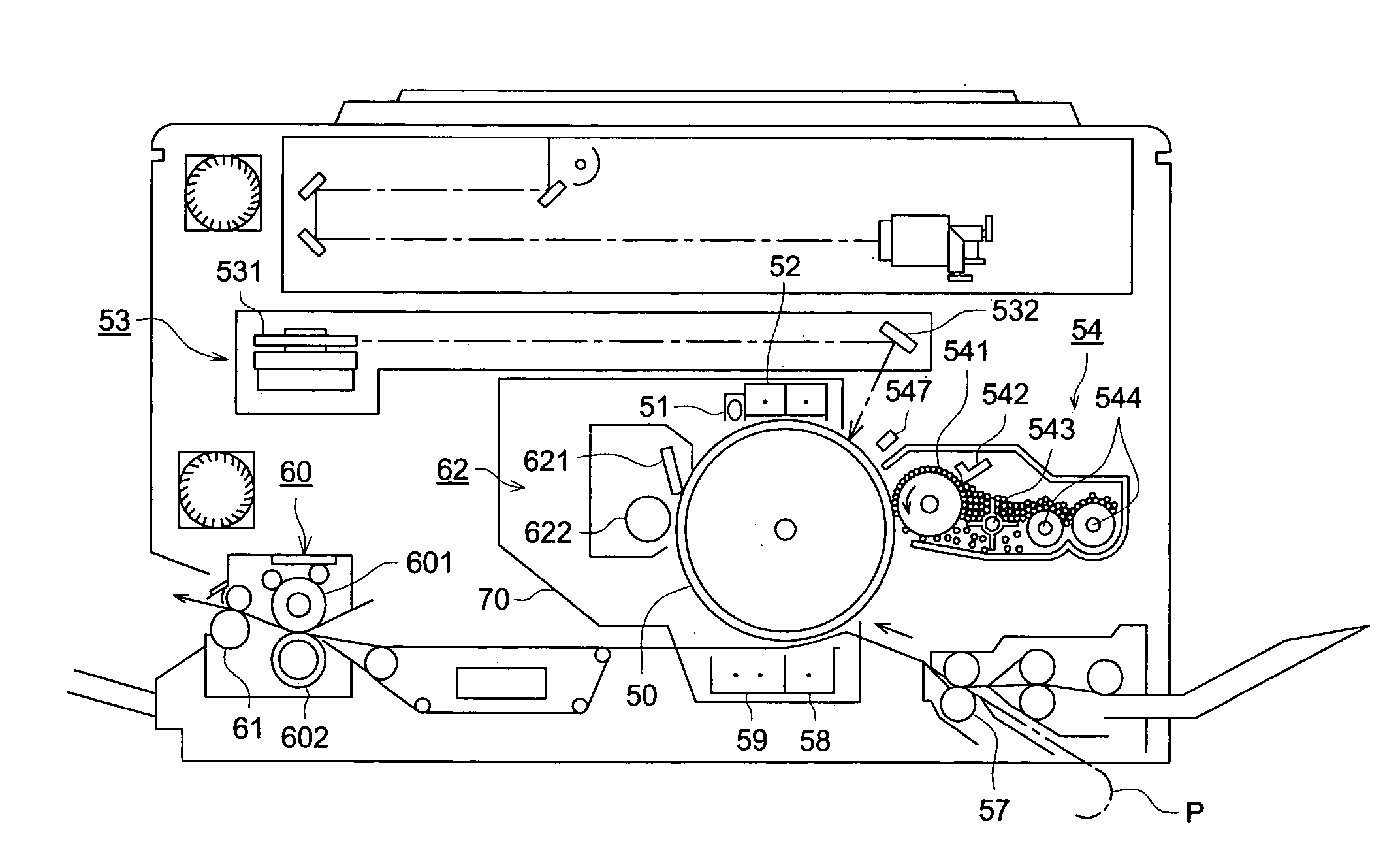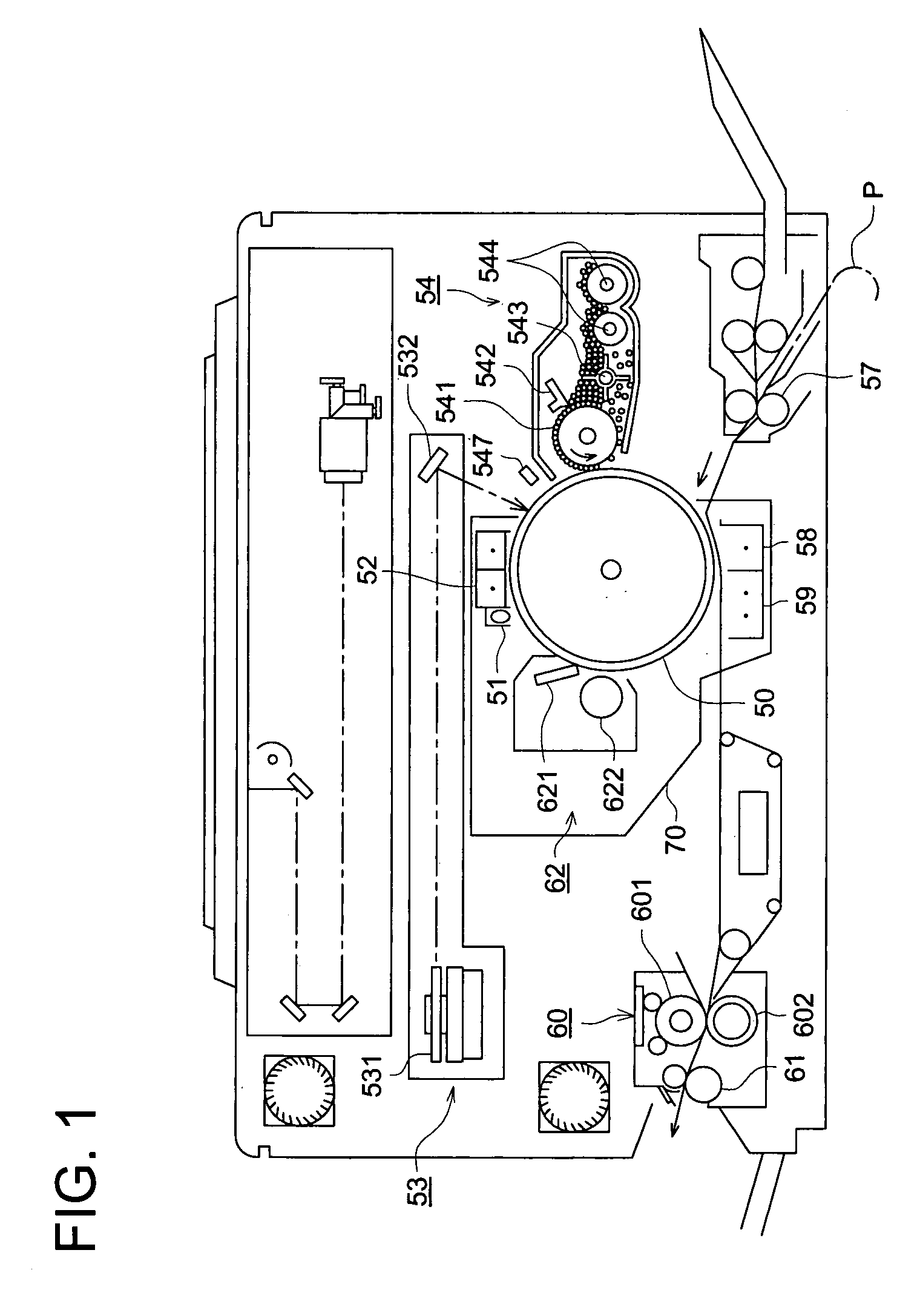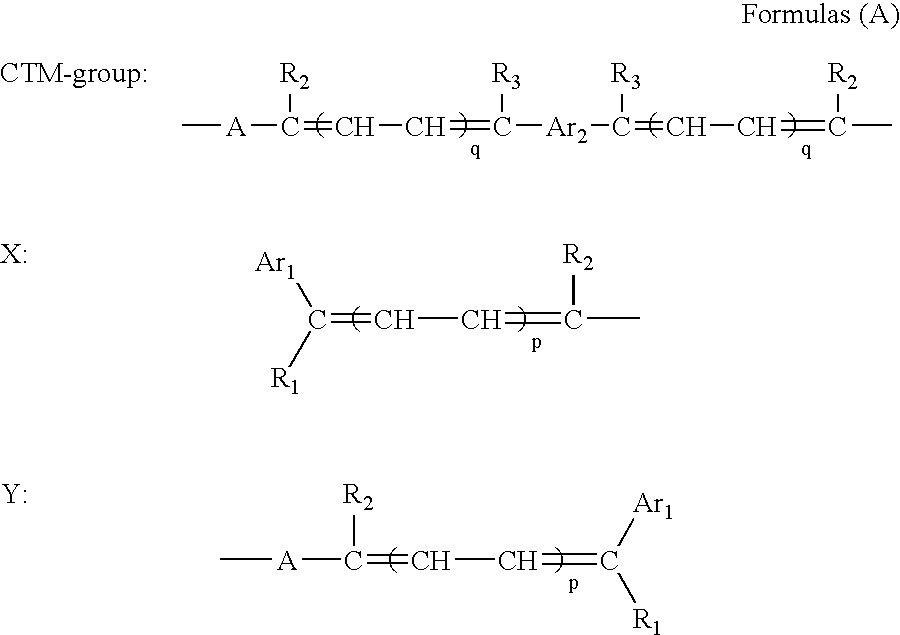Electrophotographic photoreceptor
a photoreceptor and electron microscopy technology, applied in the field of electron microscopy photoreceptors, can solve the problems of easy degradation of the quality of the layer, easy contamination of the surface of the charge transfer layer by foreign matter, and easy contamination of the surface of the charge transfer layer
- Summary
- Abstract
- Description
- Claims
- Application Information
AI Technical Summary
Benefits of technology
Problems solved by technology
Method used
Image
Examples
example 4
SYNTHESIZING EXAMPLE 4
Synthesis of Compound 12B (m=0)
[0090]
[0091]Into a 100 ml four-mouth flask to which a nitrogen gas inlet pipe, a cooler, a thermometer and a stirrer were equipped, 1.96 g (0.075 moles) of potassium tert-butoxide 4 and 20 ml of tetrahydrofuran, hereinafter referred to as THF, were charged and stirred while introducing nitrogen gas.
[0092]A solution was prepared by dissolving 1.0 g (0.003 moles) of Compound 1 and 2.63 g (0.007 moles) of Compound 2 and 2.25 g (0.008 moles) of Compound 3 dissolved in 20 ml of THF. The solution-was gradually dripped into the mixture of potassium tert-butoxide 4 and THF while the temperature was maintained at 45° C. After the finish of the dripping, reaction was carried out for 5 hours while maintaining a temperature of from 45 to 50° C.
[0093]To another 200 ml beaker, a stirrer was equipped and 20 ml of methanol was charged and stirred. The reaction liquid after the reaction for 5 hours was poured to the methanol, and 20 ml of water wa...
example 5
SYNTHESIZING EXAMPLE 5
Synthesis of Compound 11B (m=0)
[0097]
[0098]Into a 100 ml four-mouth flask to which a nitrogen gas inlet pipe, a cooler, a thermometer and a stirrer were equipped, 1.96 g (0.075 moles) of potassium tert-butoxide 4 and 20 ml of tetrahydrofuran, hereinafter referred to as THF, were charged and stirred while introducing nitrogen gas.
[0099]A solution was prepared by dissolving 1.0 g (0.003 moles) of Compound 1 and 2.46 g (0.007 moles) of Compound 2 and 2.41 g (0.008 moles) of Compound 3 dissolved in 20 ml of THF. The solution was gradually dripped into the mixture of potassium tert-butoxide 4 and THF while the temperature was maintained at 45° C. After the finish of the dripping, reaction was carried out for 5 hours while maintaining a temperature of from 45° C. to 50° C.
[0100]To another 200 ml beaker, a stirrer was equipped and 20 ml of methanol was charged and stirred. The reaction liquid after the reaction for 5 hours was poured to the methanol, and 20 ml of wate...
example 6
SYNTHESIZING EXAMPLE 6
Synthesize of Compound 17C
[0112]Into a 100 ml four-mouth flask-to which a nitrogen gas inlet pipe, a cooler, a thermometer and a stirrer were equipped, 4.08 g (0.04 moles) of 2,4-dimethylaniline, 4.08 g (0.02 moles) of iodobenzene, 9.9 g (0.03 moles) of di-iodobenzene, 1.27 g (0.02 moles) of powdered copper and 11.04 g (0.08 moles) of potassium carbonate were charged and reacted over 30 hours at 190° C. while introducing nitrogen gas.
[0113]The reaction liquid was cooled to 60° C. and 200 ml of THF was added to the liquid, and the mixture was filtered. The filtrate was concentrated and dissolved in 100 ml of toluene and 10 g of Wakogel B-0 (Wako Pure Chemical Industries, Ltd.) was added, and stirred for 30 minutes and filtered. Filtered Wakogel was washed by 30 ml of toluene. The filtrate and the washing liquid were concentrated and dried. The dried substance was dissolved in 20 ml of THF and the solution was dripped into 120 ml of methanol for purifying by re-p...
PUM
 Login to View More
Login to View More Abstract
Description
Claims
Application Information
 Login to View More
Login to View More - R&D
- Intellectual Property
- Life Sciences
- Materials
- Tech Scout
- Unparalleled Data Quality
- Higher Quality Content
- 60% Fewer Hallucinations
Browse by: Latest US Patents, China's latest patents, Technical Efficacy Thesaurus, Application Domain, Technology Topic, Popular Technical Reports.
© 2025 PatSnap. All rights reserved.Legal|Privacy policy|Modern Slavery Act Transparency Statement|Sitemap|About US| Contact US: help@patsnap.com



